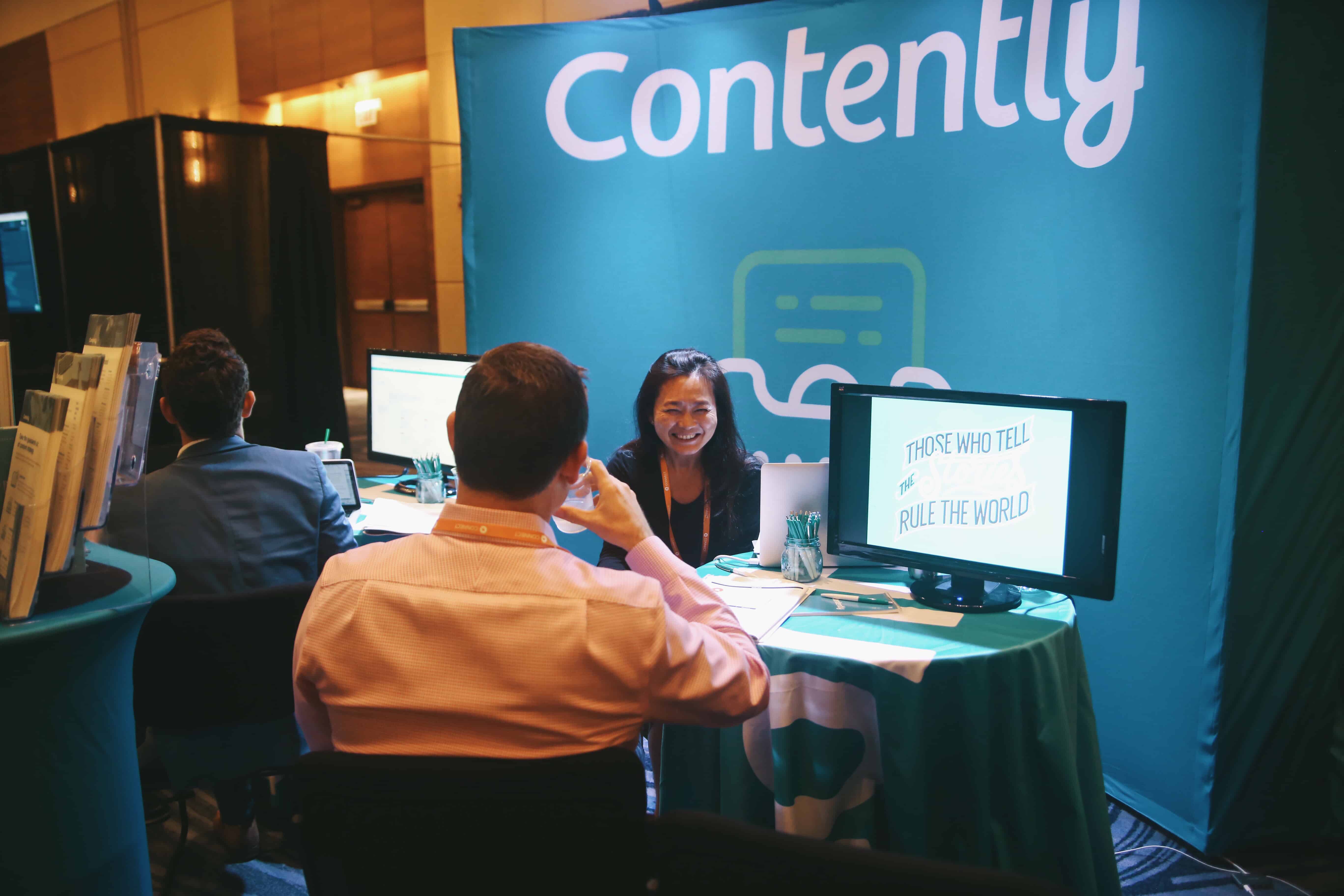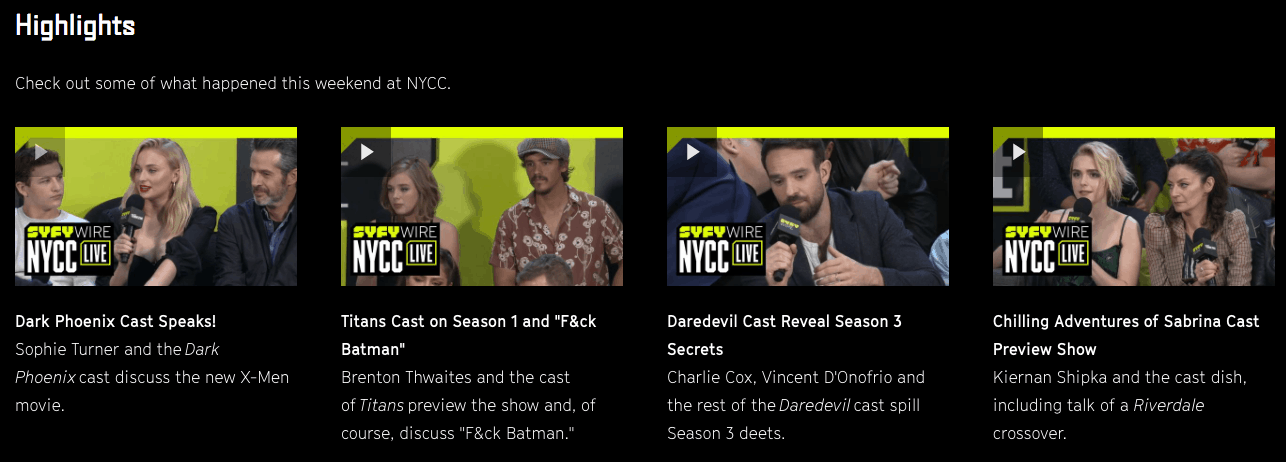ROI
10 Types of Content That’ll Make Your Event Marketing More Effective
Despite marketing’s digital transformation, event marketing is still the toast of the industry. According to Bizzabo, 80 percent of marketers believe live events are critical to their company’s success, and 87 percent of C-suite executives plan to invest more money in live events.
To a marketer writing all day, event marketing might sound like a glorified series of networking happy hours, but in reality, the job requires a lot of collaboration. Event and experiential marketers oversee happy hours, sure, but they also plan and execute presentations at trade shows, client dinners, product demos, Jeffersonian discussions, and award ceremonies. For these investments to bring in ROI, they need support from content.
In 2016, the Event Marketing Institute and Mosaic partnered to study trade show and experiential program attendees and exhibitors, and they discovered a surprising sense of optimism on both sides. According to their study, 75 percent of companies with event budgets between $50-100 million say they expect an ROI of more than 5:1 for live events.
The key to showing up well at a successful marketing event is preparation. More often than not, the lead-in process can’t all fall on a single employee, which means event marketers need to convince their colleagues to roll up their sleeves and get involved.
With all that in mind, here’s a list of useful content formats for supporting your company’s event marketing.
Brand messaging
Before you take the stage or host a dinner, your brand needs to know who your customers are and what to say to them. Without that, any event spend will just be total guesswork.
Good messaging requires a lot of research and legwork—and it should all be documented. Your messaging should cover a brand’s story, pillars, taglines, ideal client profiles, and key messages. Because when your team is on the floor at a crowded convention, they won’t discuss industry analysis at length with everyone they meet. They need their messaging in short bites, and everyone should be able to deliver an elevator pitch at a moment’s notice. If you’re marketing a product that can support mid-level managers at Fortune 1000 finance companies, all the content you use, from the presentations to the menu, should be optimized for what you know about that demographic—how your consumer base speaks, what their pain points are, what they’re into when they’re not at work.
Pre-event coverage
Covering your events on a blog is tricky. It all depends on how many people are involved. If you’re going to workshop with 50 people, that audience is probably too small to warrant dedicated solely dedicated to the event. For a conference with 5,000 people, it’s a different story.
Either way, you can always create something to ramp up to an event. Let your team explain what they’re excited about. Discuss the major themes with your own spin. To differentiate this writing from a press release, don’t just talk about your own presentations. Who are you excited to meet? What other sessions look intriguing?
Lastly, if someone wants to find out more about the event, make sure all content links to a landing page.
Event promotion is like content distribution—if you’re going to spend a lot of money on programming, you need to make sure people know where you’re going and how they can get involved. Given that our inboxes get flooded with reminder emails, your content team should take a long look at what they can do to stand out from everyone else, whether that means going with a bold subject line, getting a little something extra from the design team, or focusing on an exclusive giveaway or piece of content. (We raffle off Beats headphones to people who register for certain things before our events.)
You don’t have to throw out your entire email strategy while an event approaches—keep your regular newsletters going, but consider placing a nice little widget to register for your brand’s presentation somewhere in the body. If an upcoming event is focused on a certain theme, your email newsletter in the preceding weeks might include a round-up of evergreen blog posts on that same idea.
Presentation decks
A great slide deck and a great article call for a lot of the same things: research, interviews, narrative, editing, and proofing. But too many presenters stuff their slides with super granular information about their companies and read it right off the screen. That’s how you lose the audience.
Easily my favorite #CMWorld yet. An amazing week geeking out with @jayacunzo @AmandaChanguris @mmagnarelli @johnhall @marcgraser and many other brilliant content geeks. Thanks to everyone who packed the ballroom for my talk. It was unreal. ❤️❤️❤️ pic.twitter.com/B7vRxVyU6l
— Joe Lazer (@JoeLazauskas) September 7, 2018
Your speech needs to be more interesting than the prospect of networking with whoever else is at the table. A good content team should help flesh out the story ahead of time and cut out the narrative fat. An effective Powerpoint deck, for instance, will immediately communicate a brand’s aesthetic while keeping a speaker focused on high-level information. Use as little explanatory text as possible (save that for your speaker) and focus on simple sentences, images, and data visualizations.
One-sheeters
Even if your employees are fluent in your brand messaging and know how to make a good impression, it helps to have a physical handout that people can take home. If you’re at an industry conference, attendees are going to hear dozens of spiels and product pitches. The more they hear, the more likely they are to forget whatever your sales team said to them four hours ago.
One-sheeters should be concise rundowns of whatever you want people to remember from your brand. Think of them as a hybrid of a Powerpoint slide, a case study, and an infographic. One-sheeters tend to focus on product marketing materials, but they can also work well for new announcements, product launches, and rebrands.
Swag
I’ve waded through an infinite cornucopia of free objects at trade shows over the years, and most have ended up in the drawer where I keep silverware. I’ve been handed beer koozies, pocket protectors, pens, tote bags, stress balls, plastic water bottles, Livestrong-knock-off bracelets, bookmarks, and those little rubber pockets designed for your credit card.
https://www.instagram.com/p/BnZTcIZF995/?utm_source=ig_embed
Instead of trying to draw everyone into your brand’s booth by bringing plastic trash with universal appeal, decide who your target audience might be at an event. If you’re hoping to nab women who work in marketing, bring insoles for high heels, oil-blotting sheets, and mints. And make sure whatever you bring is clearly associated with your brand. Effective branding doesn’t just happen on the fly, which means a marketing team needs to brainstorm, solidify, and execute ideas long before anyone from events takes the stage. All of the giveaways have to tie back to a central brand purpose, and that unity has as much to do with ideology and rhetoric as it does color and font.
Social copy + multimedia
Even if your social media manager isn’t on site for an event, your brand should make its presence at a trade show or awards ceremony known with a mixture of scheduled posts and live updates.
"Neurons that fire together, wire together." We hope you got plenty out of @JoeLazauskas demonstrating why great stories make our brains want to buy! #EVATL #DigitalSummit #thestorytellingedge pic.twitter.com/pYWckOjjtV
— Contently (@contently) October 23, 2018
Don’t just shout these announcements into the void, either. Have the employees working an event report back to the social media team in real-time with photos and key takeaways as they’re watching presentations. Did your VP of finance sit on a panel? Post a photo of the panel from the audience, get the panel members together afterward for a quick pic, and tag everybody who’s involved with a salient quote from the proceedings.
Product demo
This will apply more to larger events with booth space. When you’re plotting out your product demo, consider the possibility that new listeners might walk up in the middle. Your presentation needs to be as well-rehearsed and concise as it can be, especially because your captive audience might grow and shrink in size as you deliver it. An easy way to do this is to document a demo script that employees can reference, whether at the event or their desks.

Don’t be afraid to keep your demo super specific. If you’re going after a certain demographic, walk everyone on the floor through the steps your target user might take. Most people will be willing to extend the limits of their imagination and figure out how they might use your product to their advantage.
Post-event coverage
Similar to pre-event coverage, how you follow up with content after an event depends on how many people were there. Encourage your brand leaders to weigh in on events after they’re returned to the office, but don’t just list all the handshakes and lectures they attended. What were the break-out themes? Did they learn anything new? How will your executives use what they learned? Answer any and all of these questions in a blog post, and embed all the lovely social-friendly images you captured on the show floor.
For readers who weren’t able to attend, consider uploading a copy of your presenter’s deck onto your website. Bonus points if you were able to record the presentation!
Video
Video content from an event doesn’t suffer from the same limitations as written content. As long as you focus on the themes, topics, and recognizable names from an event, a clip can still bring in engagement long after it ends.

A great, recent example of a brand covering its own projects is the SYFY network’s live-feed at New York Comic Con, on which SYFY staff reporters and video hosts interviewed celebrities from the geek entertainment industry. The event, held in the Javits Center in midtown Manhattan, was a chaotic maze packed with geeks, but SYFY’s new green-and-black branding was visible nearly every direction you turned.
Even if you only choose to invest in certain formats on this list, you’ll benefit from letting your event marketing get more content support. Just as your regular content follows customers on their journey or guides potential clients through the sales pipeline, your event marketing should be accessible to attendees from the moment they register to the moment they’re back at their desk, holding a branded stress ball.
Get better at your job right now.
Read our monthly newsletter to master content marketing. It’s made for marketers, creators, and everyone in between.




